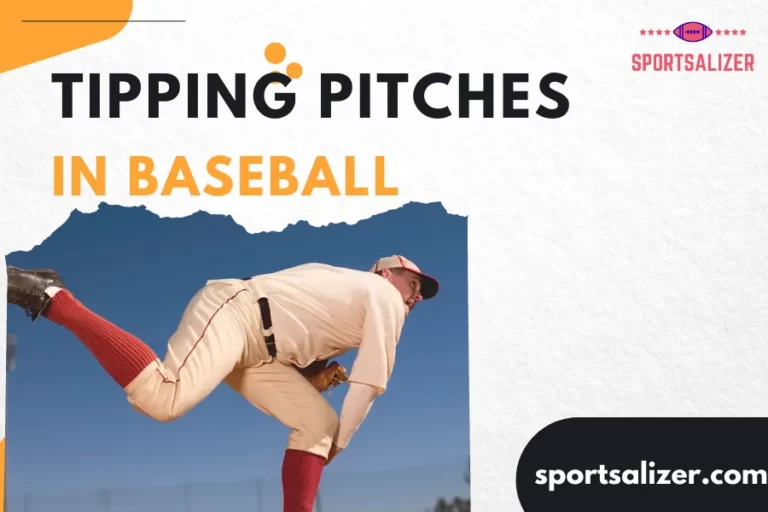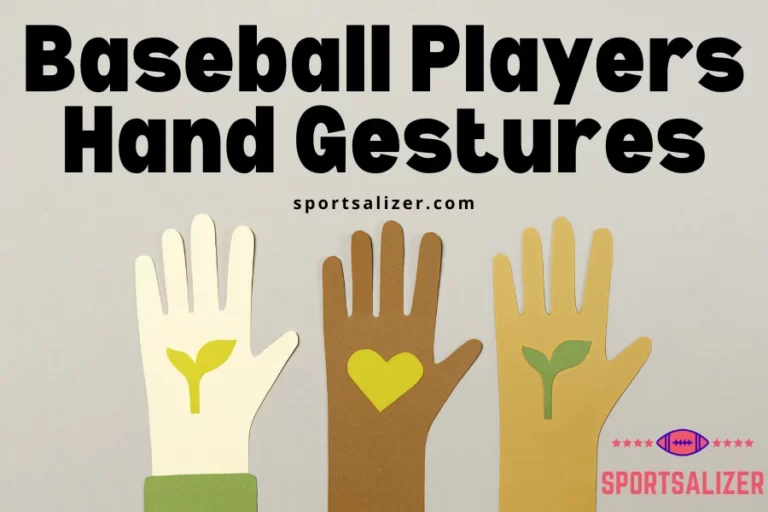Baseball Swing: Learn the 2 steps to get that perfect swing
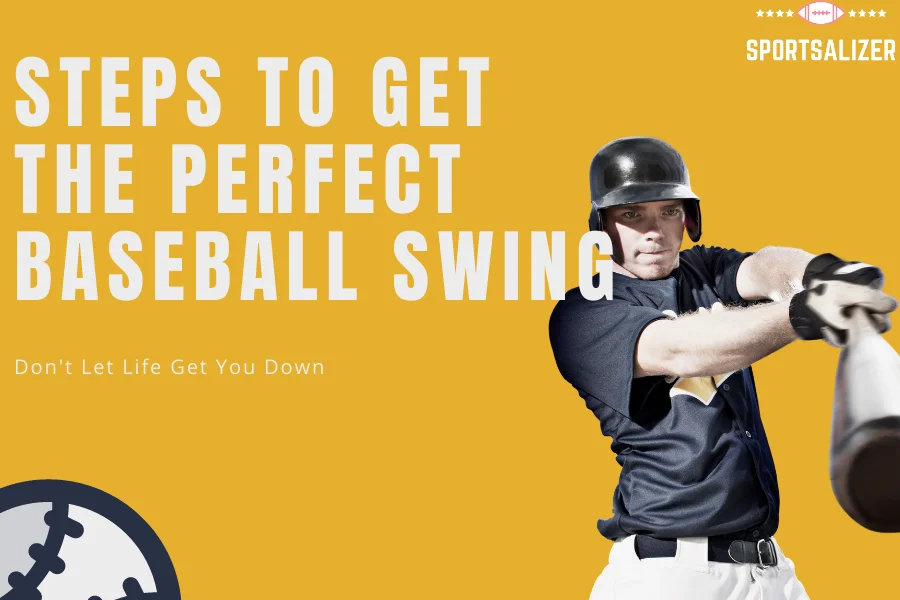
All of us have seen how those professional players make those perfect baseball swings. It looks so easy to see it on screen or in the stadium, right? But although it seems easy, in reality, it is not easy to get the perfect baseball swing. So let us dive deep into the mechanics of Baseball Swing.
A baseball swing is a coordinated movement of the arms, shoulder, and upper body to hit the ball with the bat. Also, a swing is only considered when it is not a “bunt.”
Contents
How to get the perfect Baseball swing?
So after getting a brief idea about the baseball swing, you might wonder how one achieves the perfect baseball swing? Let us break it down for you.
Two basic steps are involved in having a flawless swing. But all these two steps come with some sub-steps, which are very important to follow with precision.
Stride Phase
This is the first step to having the swinging baseball bat hit the ball. The stride phase is subdivided into ten sub-steps. We shall describe each step as we proceed.
Setup or Stance

This is where a player is at liberty to customize according to their will and make this the signature step. It is possible to exercise freedom in this step as this is a “pre-swing step.” There can be various types of stances depending on the player’s choice. It can vary between narrow to wide or from closed to open to the parallel range.
The excessive negative weight shift stage
To perform a baseball swing, players need to align their body weight correctly. So that is where the second step in the first phase begins. You might already be aware of the center of mass for a body. To have a stable posture and facilitate movement, it is necessary that the center of gravity stains within the body and not fall outside it.
Since every player has a different style, it is crucial to position their body to load the weight of the body around the rear hip and in a “ready position” to move forward.
So what is about the negative weight shift? When there is an excess of weight that gets shifted outside of their rear hip while there is the loading of weight taking place. This becomes highly inconvenient for the player, and often, they fail to make a desirable move.
A Poor Rear Hip Load
It is crucial to load the weight in a coiled manner around the “rear hip socket.” It should be done in a way that it acts like a pressed spring, such that when the player hits the ball, the load acts like a spring that got “fired.”
This phase makes it easier for the player to maintain the balance and allows them to carry on the “tension” throughout the first phase.
Recommended Reading | Average 60 Yard Dash: The Faster, the Better
Inability to maintain the center of mass
If you have noticed carefully, you must have seen that the professional players (most of them) maintain both balance and posture from the beginning until the end of the match. The balance is responsible for controlling the COM or Center of mass of the body, which remains relative to the support base. It is essential to maintain balance as the imbalances can have severe consequences on the timing and reflex of the player. A wrong move can even affect how the bat is rotated for the swing.
Posture is another critical factor to have the perfect baseball swing. The most flawless rotation happens on the “vertical axis,” so maintaining the posture’s alignment becomes crucial.
Lack of linear momentum
Linear momentum is the result obtained by the product of both mass and velocity. If this is not exercised correctly, then shifting weight to the front side of the body will not be possible. This can negatively affect the hitter, which would result in a loss of “bat speed” and the “batted ball velocities.”
Scarcity of free hands
The ability of the batter to develop “independent hands” during the favorable motion forward will allow him to optimize separation while also giving him more time to make better judgments and flexibility. So how do they do it? Simple. They move their hands away from the pitcher as their body approaches near to them.
Keeping the elbow high
Only when the shoulder blade pulls back towards the center of the body and spine is an optimal scap load. This is effective for the batter because it helps the upper body resist when the lower body fires, resulting in more separation and torque in the swing.
Stride length
The stride length depends on the player’s strength, mobility, and power. Whether the stride length for the baseball swing will be “too long” or “too short” depends on these three factors and the professional maturity of the players. Also, how open or closed the front leg should depend on hip mobility.
The Swing phase
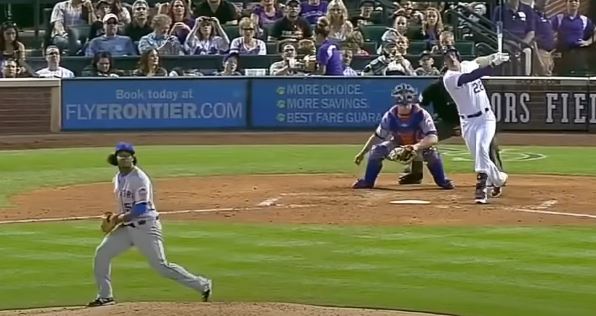
This is the second phase for making the baseball swing. This is also referred to as the “rotational phase.” This phase is subdivided into four sub-categories.
Front Knee Angle
This particular thing can vary from one player to another. But one thing should always be maintained: the knee angle should “never” increase after the heel strike has already occurred.
Maintaining a slightly bent knee at the heel plant is critical for keeping the body centered and in control while efficiently transitioning from the linear phase to the rotational phase.
Lead Leg block
If this is inefficient, the batter cannot transition from the previously mentioned Stride phase to this rotational phase utilizing the “ground forces.”
If the player cannot stiffen up the front foot immediately after the healing plant takes place, it often results in sliding towards the pitcher. The main thing in this step is to be able to decrease the “flexion” immediately after the heel plant.
Axis of Rotation
This is pretty obvious that it is the most crucial step in this phase. The most efficient rotation occurs on a vertical axis, and the faster the rotation is, the faster the bat will approach the hitting zone.
One-Piece Swing
In this, two components of the body move simultaneously. When the shoulders line and the hips reach their greatest disassociation, and the core is strengthened, it is halfway between foot strike and heel plant. The swing begins its rotating phase, providing the torque needed to unwind.
Push
This happens when the hitter uses the back arm to push the knob towards the zone rather than connecting the back elbow and whacking the bat through the zone with both hands.
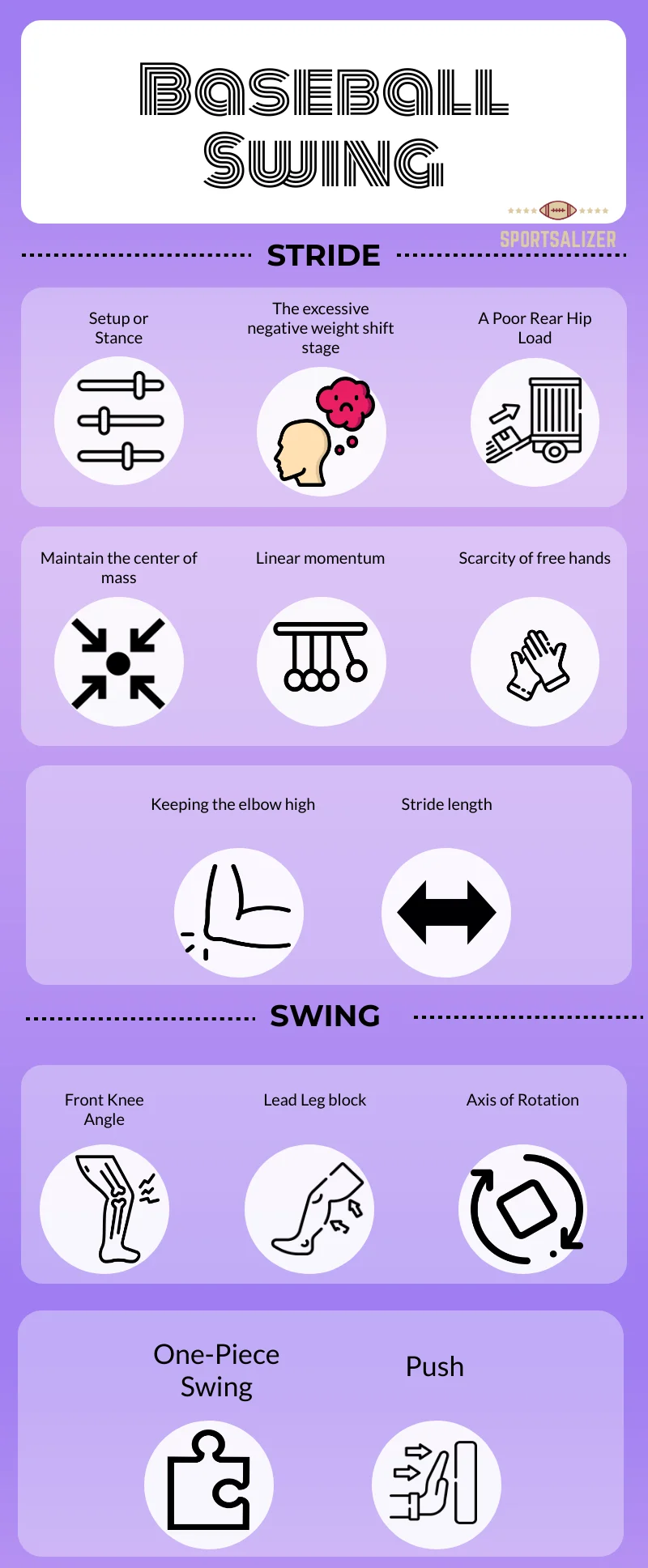
Baseball Swing vs Golf Swing
| Baseball Swing | Golf Swing |
|---|---|
| The ball does not remain stationary but approaches the player with some momentum. | The ball is stationary, in this case. |
| The baseball club swings on different planes. | The golf club swings on only one plane |
| There is still a back-swing for a baseball player, but the club is still in this place. | They must load their weight onto their right-hand side as they swing back and bring the club to the pinnacle of the back-swing. |
Slow Motion Baseball Swing
FAQs on Baseball Swing
What may the creases in the pants near the back hip of a hitter represent?
If this is observed at the end of the negative mood of the excessive weight shift, then it may be a sign that he is loading the hip region with the weight.
What is the meaning of the term “check swing?”
To avoid swinging into a strike, a batter often uses the check swing. In this case, the batter holds back immediately after swinging the bat.
Are baseball and Softball swings different?
Because of the rising trajectory, the softball hitter is forced to hit an incoming pitch with an upward plane rather than a downward plane. The requirement to adapt the softball swing when a rise ball is detected may be the most significant difference between the baseball and softball swings.
How long does it take to swing a bat?
Going through the steps mentioned above, it might seem that it takes a long time to swing the bat. But the reality is quite the opposite. On average, it takes a batter somewhere around 150 milliseconds to make the swing and get the baseball bat over the plate.
Conclusion
In a nutshell, a baseball swing requires a lot of practice and learning all these steps precisely. After reading through this article, we hope you have developed a brief idea about how to do the baseball swing.


